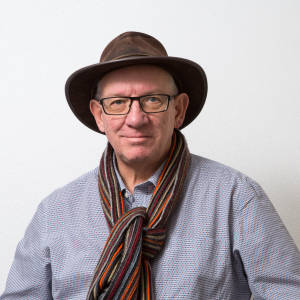Christ the King Church
The Christ the King Church is a former parish church in the Nieuw-Ende neighborhood of the Heerlerheide-Vrieheide district of Heerlen. The church building was designated as a national monument on July 13, 2018. Since 2023, the building has been used as an archive depot, study room, and office for the Heerlen branch of Historical Center Limburg.
As early as 1920, when the mining colonies Nieuw Einde and Versiliënbosch had only been founded in Vrieheide, pastoral care was provided by the Lazarists. In 1924 a rectorate was founded, and people worshiped in a temporary wooden church. The first stone church in Vrieheide, on the Anjelierstraat, was completed in 1928. It was a brick basilica, designed by the architect Joseph Franssen, characterized by, among other things, Art Deco elements. In the years 1948-1950, the church received murals by the Maastricht artist Ko Sarneel. In 1955, the building was expanded with a chapel in honor of Our Lady of the Miraculous Medal.
In 1959, the neighborhood became involved in the Heerlen urban expansion. There was talk of population growth and the church building became too small. In addition, it suffered from mine damage. The church was withdrawn from worship in 1963 and demolished in 1965. Once again, the local residents temporarily church in an emerging church. However, in 1964 the rectorate was elevated to a parish.
A new, larger church was completed in 1965 on a plot on the nearby Zes Landenstraat, designed by the architect Jozef Fanchamps. The building took the form of a white, concrete, cube-shaped hall church, with a free-standing concrete bell tower. The walls were constructed of glass bricks, which were partly shielded by wood wool cement panels on the inside of the building. A semicircular chapel was given a mosaic on the outside by Libert Ramaekers, which depicts the Entry of Jesus into Jerusalem.
Since the church was soon in a bad state, partly due to concrete rot, there were already demolition plans in 1977. However, it was decided to repair it, which happened in 1984. In 2004 the church was withdrawn from worship, and in 2009 - after impending demolition - it was placed on the municipal monument list. Partly because of the connection of the neighborhood with the church, the Cultural Heritage Agency of the Netherlands also designated the building as a national monument on 13 July 2018.
A new use for the vacant building has been sought for several years. In 2016, this led to the municipal decision to purchase the church from the church authorities and to house the Rijckheyt regional archive in Heerlen. All this remained with a decision, until on December 31, 2019, Rijckheyt and the Regional Historical Center Limburg (RHCL) in Maastricht merged into one Historical Center Limburg (HCL), with locations in Heerlen and Maastricht. In 2020-2021, the building was restored and the new archive was erected as a separate block of new construction within the shell. In 2021, the archive depot, reading room, and offices were created. On August 1, 2022, the former Rijckheyt, still located in the Thermenmuseum, closed its doors and the packing and moving of archives and collections began. The reopening of the archive took place on January 11, 2023.
In January 2023, a stained glass window by artist Eugène Laudy was given a new use in the archive building. The glass came from a demolished school on Limburgiastraat in Heerlen. Since 2017, Heritage Association Heemschut has committed itself to preserving the window; it was removed in time, stored, and placed in the archive building in 2023.
Source: Wikipedia.
- 5
- 0
- Canon EOS 5D Mark III
- 1/100
- f/8.0
- 24mm
- 100

Comments
Sign in or get an account to comment.


